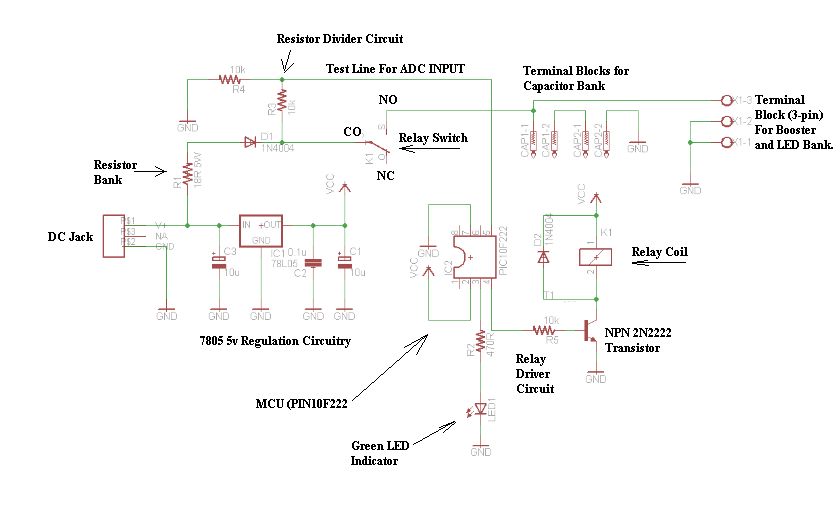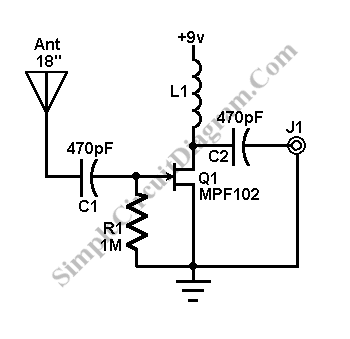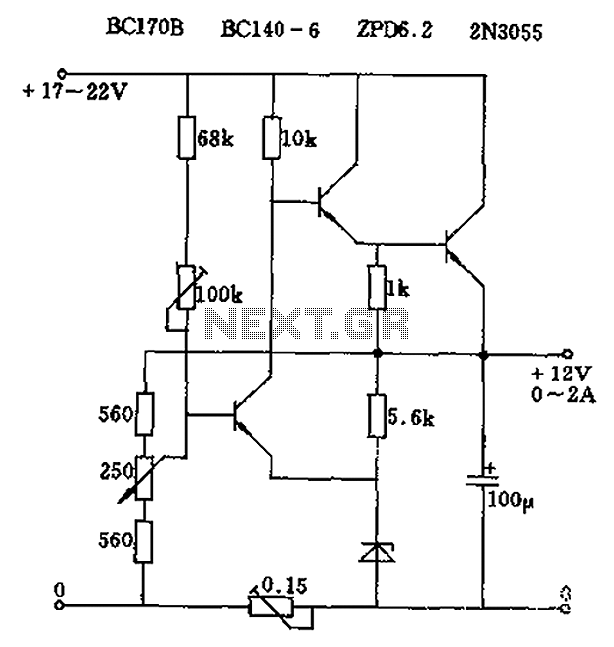
The Super Capacitor Flashlight with Custom Charger and Voltage Booster

The schematic consists of four hardware blocks: 1) The wall transformer 2) The charging circuit 3) The control unit 4) The output stage.
The circuit schematic is structured around four essential hardware blocks that facilitate the overall functionality of the system.
1. **Wall Transformer**: This block serves as the primary power source, converting the high-voltage AC from the mains supply into a lower voltage AC suitable for the circuit's requirements. Typically, a step-down transformer is employed to achieve the desired voltage levels, ensuring safe operation of subsequent components.
2. **Charging Circuit**: The charging circuit is responsible for converting the AC voltage from the wall transformer into a stable DC voltage. This is usually accomplished using a rectifier (either full-wave or half-wave) followed by a smoothing capacitor to filter out ripples, providing a steady DC output. This voltage is crucial for powering the control unit and other components effectively.
3. **Control Unit**: The control unit acts as the brain of the circuit, managing the operation of the entire system. It may incorporate a microcontroller or a dedicated logic circuit that processes input signals, executes programmed instructions, and controls the output stage based on predefined conditions. This block may also include various sensors and feedback mechanisms to monitor performance and adjust parameters dynamically.
4. **Output Stage**: The output stage is designed to deliver the final output of the circuit, whether it be a signal, power to another device, or any other form of output. This block may consist of amplifiers, drivers, or other components that ensure the output is at the required levels and formats for the intended application.
Each of these blocks is interconnected through a series of conductive paths, with careful attention paid to component ratings and specifications to ensure reliability and efficiency. The overall design must also consider aspects such as thermal management, electromagnetic compatibility, and safety standards to ensure optimal performance in real-world applications.Before I begin talking about the schematic, let it be known that there are four hardware blocks to this circuit: 1) The wall transformer 2) The charge.. 🔗 External reference
The circuit schematic is structured around four essential hardware blocks that facilitate the overall functionality of the system.
1. **Wall Transformer**: This block serves as the primary power source, converting the high-voltage AC from the mains supply into a lower voltage AC suitable for the circuit's requirements. Typically, a step-down transformer is employed to achieve the desired voltage levels, ensuring safe operation of subsequent components.
2. **Charging Circuit**: The charging circuit is responsible for converting the AC voltage from the wall transformer into a stable DC voltage. This is usually accomplished using a rectifier (either full-wave or half-wave) followed by a smoothing capacitor to filter out ripples, providing a steady DC output. This voltage is crucial for powering the control unit and other components effectively.
3. **Control Unit**: The control unit acts as the brain of the circuit, managing the operation of the entire system. It may incorporate a microcontroller or a dedicated logic circuit that processes input signals, executes programmed instructions, and controls the output stage based on predefined conditions. This block may also include various sensors and feedback mechanisms to monitor performance and adjust parameters dynamically.
4. **Output Stage**: The output stage is designed to deliver the final output of the circuit, whether it be a signal, power to another device, or any other form of output. This block may consist of amplifiers, drivers, or other components that ensure the output is at the required levels and formats for the intended application.
Each of these blocks is interconnected through a series of conductive paths, with careful attention paid to component ratings and specifications to ensure reliability and efficiency. The overall design must also consider aspects such as thermal management, electromagnetic compatibility, and safety standards to ensure optimal performance in real-world applications.Before I begin talking about the schematic, let it be known that there are four hardware blocks to this circuit: 1) The wall transformer 2) The charge.. 🔗 External reference





